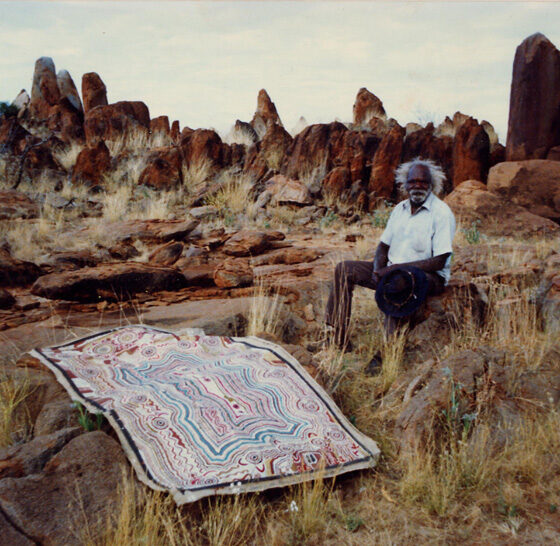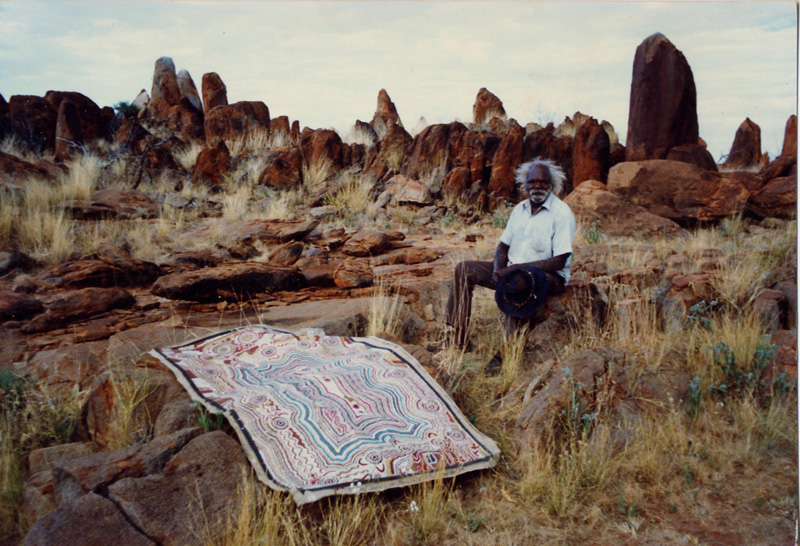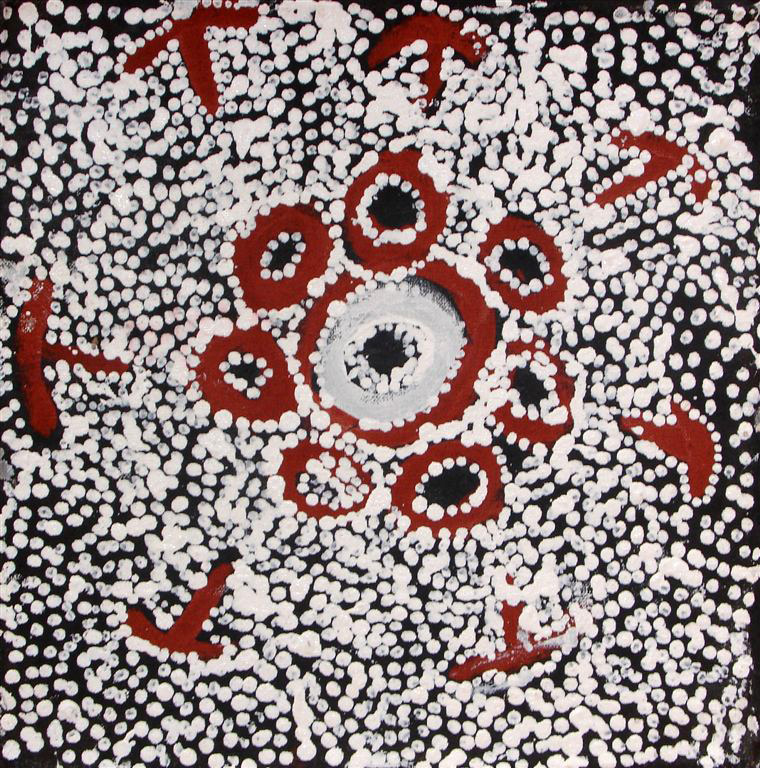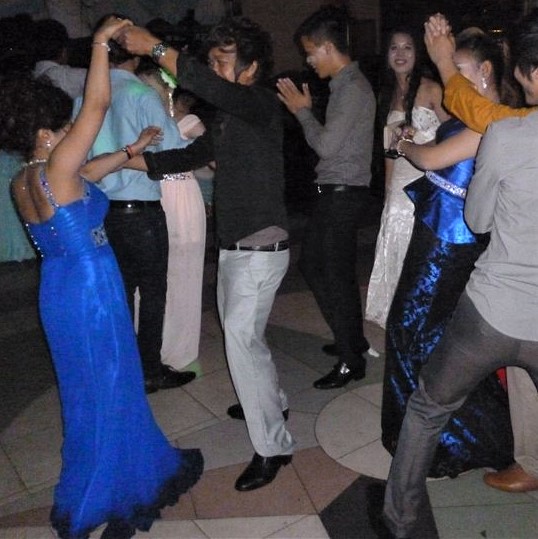
Darby Jampijinpa Ross
Painter
(1905 -2005)
 Late in 2005, the day after Darby Ross received his letter from the Queen of England congratulating him on turning 100 years of age, he passed away in the Hetti Perkins Hostel in Alice Springs.
Late in 2005, the day after Darby Ross received his letter from the Queen of England congratulating him on turning 100 years of age, he passed away in the Hetti Perkins Hostel in Alice Springs.
Darby was an inspirational Warlpiri elder from the remote community of Yuendumu, a leader, and artist who had seen and been part of some of the most dramatic changes to indigenous ways of life in the Northern Territory.
He was a custodian of important family sites, a rainmaker, mailman, drover, teacher and the first Aboriginal curator in Australia when he oversaw the building and opening of the Yuendumu Men’s Museum in 1971. His totems were emu and bandicoot, but he also painted ngapa (water), pamapardu (flying ant) and wardilyka (bush turkey).
Darby Ross was also a senior founding artist and mentor at the Warlukurlangu Aboriginal Artist’s Association, which established the art centre at Yuendumu, today one of Australia’s most successful remote community art enterprises.
Warlpiri painter Michael Nelson Jagamara, always held the work of Darby Ross as amongst the most inspiring and influential of their peers.
“A big talker, with powerful stories, he was one of the last ones who knew old time ways and he had those stories. He’d lead dancing, get all painted up and then teach them all the proper ways. Old Darby, old ‘Kurundi’ to his friends, he was named that because of the station he was a drover on, and mailman, I think.
“He was one of the strongest painters, we shared a story, Pamapardu, the flying ant and that was one of his best ones. But he would also look at things going on and make a painting out of that. Like things in the community like animals and weather, season, or birds flying across. He was good for connecting them to the law, old stories.”
In almost 30 years of painting Darby Jampijinpa Ross never had a solo exhibition of his work but was always happy to participate in group shows.
 Photo credit: Darby Ross by Michael Jensen courtesy National Archives of Australia
Photo credit: Darby Ross by Michael Jensen courtesy National Archives of Australia




